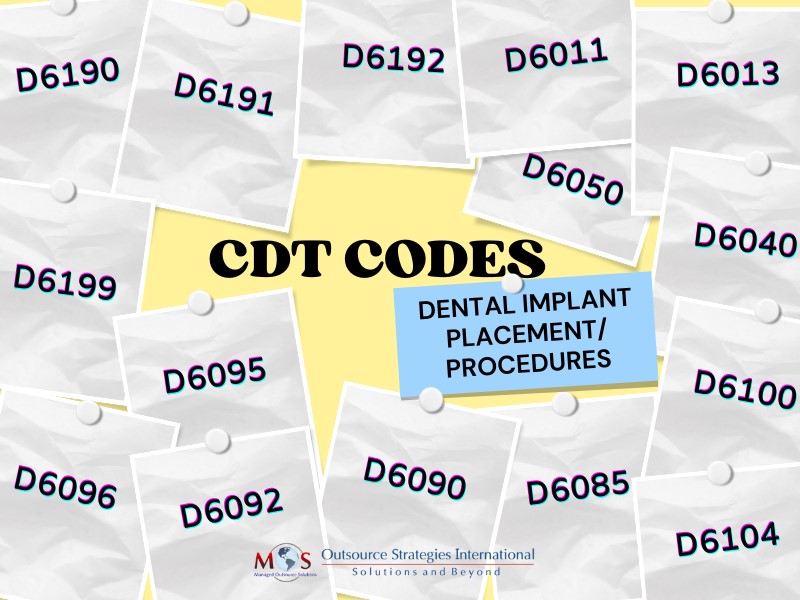Dental implant procedures may be eligible for reimbursement, only when they meet threshold of medical necessity, for instance, when provided to resolve a compromised ability to chew. While few dental policies classify an implant as a cosmetic procedure, some dental plans cover surgical and restorative aspects of dental implants. Comprehensive dental insurance verification services are crucial before consultation for dental practices to minimize claim denials. While submitting claims, dental offices should include the right CDT codes and dental ICD-10 diagnostic codes, to maximize their reimbursement.
CDT Codes for Dental Implant Placement/Procedures
Dental Implant Services
- D6190 Radiographic/surgical implant index, by the report
- D6191 Semi-precision abutment -placement
- D6192 Semi-precision attachment-placement
Surgical Implant Procedure Codes
- D6011 Second stage implant surgery
- D6013 Surgical placement of mini implant
- D6040 Surgical placement: eposteal implant
- D6050 Surgical placement: transosteal implant
- D6100 Implant removal, by report
- D6104 Bone graft at the time of implant placement
Other Implant Services
- D6085 Provisional implant crown
- D6090 Repair implant supported prosthesis, by report
- D6092 Re-cement or re-bond implant/abutment supported crown
- D6095 Repair implant abutment, by report
- D6096 Remove broken implant retaining screw
- D6199 Unspecified implant procedure, by report
Documenting each component of dental implant services helps to ensure the highest possible reimbursement. Dental practices must stay updated with the CDT codes and their changes in order to file the claims correctly. A professional dental billing company can appropriately code CDT codes during claims submission, based on the insurance availed.





